Cooking rice is still a daily occurrence in most Japanese households, where the starchy staple holds a firm place on dining tables. While nearly all families have automatic rice-cookers that make easy work of timing, there is still the important job of washing the rice before you set and forget.
Yes, in Japan rice is generally washed before cooking, although the English word “wash” doesn’t begin to convey the energy you’re supposed to expend. To give you a better idea, the verb in Japanese is togu, the same word used for honing a knife against a whetstone.
It’s a vigorous process involving repeated rinses, but the point isn’t cleanliness, it’s making sure the rice tastes as good as it possibly can.
Can’t fathom how washing would make a difference? Ask any stickler for rice-rinsing like my friend Keiko’s mother, who years ago tried to teach me how to do a proper job of making Japanese rice, starting with how to wash it.
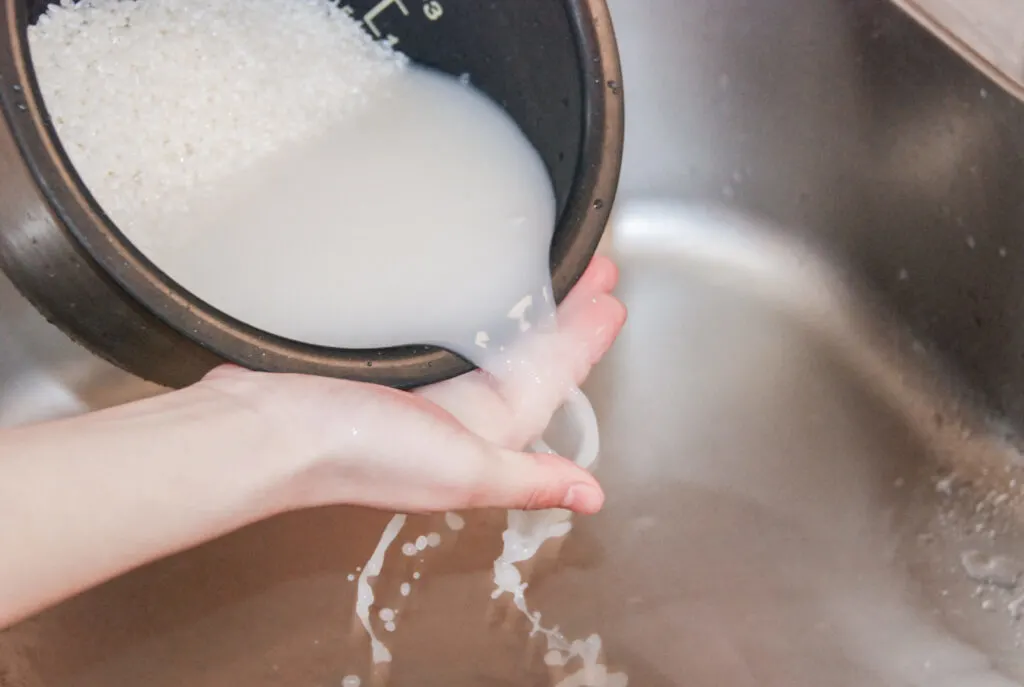
Table of Contents
Washing rice the Japanese way
Under Keiko’s mother’s tutelage the process was a whole lot closer to “scrub” than “rinse.” Koshi o irete! (“Put your back into it!”) she’d insist, showing me how to shove the ball of my hand against the sludge of wet uncooked rice in the pot.
Kireina mizu ga deru made! (“Keep at it until the water comes out clear!”) she’d demand, making me pour off the cloudy water and start again.
Do this right, she warned, or your rice won’t have the right taste or fragrance.
The science behind washing rice
There’s no argument that the Japanese have perfected the art of a delicious bowl of rice, but just what are you washing off?
To get to the bottom of that, we need to understand a bit about rice processing. All Japanese rice starts out as genmai, the unpolished kernel, or what we call “brown rice” in English. Although some Japanese eat rice in this more natural state, most homes and restaurants prefer seihakumai, the ubiquitous white rice, which has been processed to remove the germ (haiga) and bran (nuka).
But even after processing, the rice still has a sticky coating called hada nuka (literally “skin bran”), and that is what you’re supposed to wash off. If you don’t, your cooked rice will suffer in both taste and aroma.
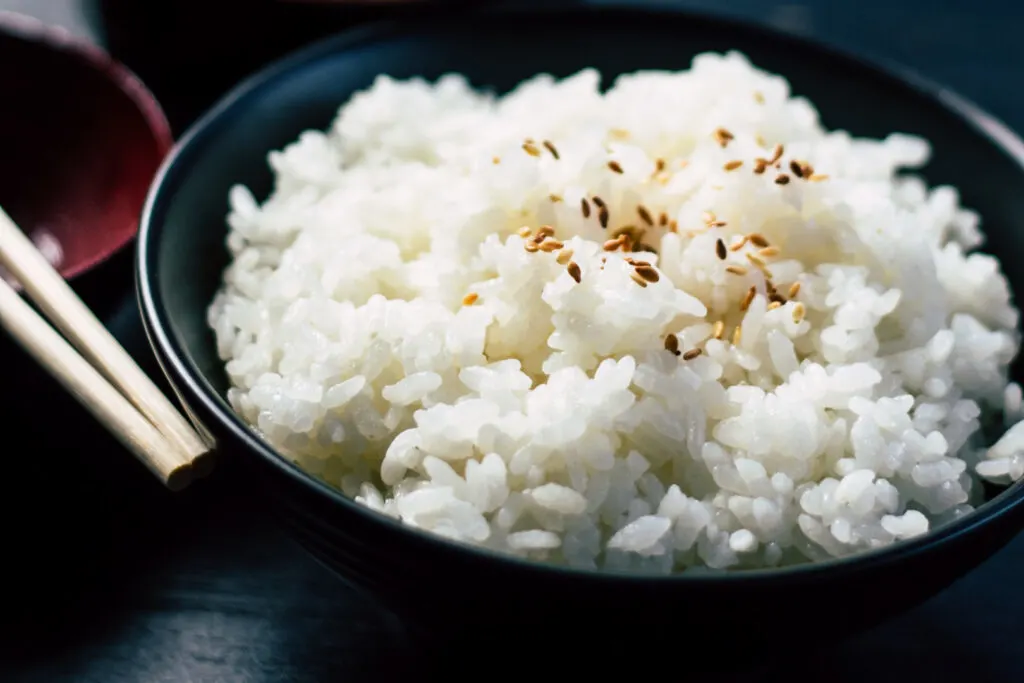
What is “no-wash” rice?
Thanks to technology introduced about 30 years ago, processors can now remove this sticky coating so consumers don’t have to.
Rice processed in the new way is called musenmai (no-wash rice), the advent of which has eliminated the time-old ritual of washing rice from some but certainly not all kitchens. Keiko’s mother, for one, is sticking to the old ways.
“Naturally I’ve heard of musenmai,” she sniffed when I called to ask. “But I don’t use it. Who knows how they make the stuff?”
That seemed like a fair question, so I took it to the Musenmai Association of Japan (Zenkoku Musenmai Kyokai), a Tokyo-based trade association.
How is musenmai made?
There are different methods for making musenmai, I learned, but the lion’s share is processed by what is called the “BG” (for “bran grind”) method.
In this way of processing, the milled rice goes through one extra step in which it is tumbled in a narrow tube. This small innovation is pretty ingenious, because it uses the adhesiveness of the sticky layer against itself – during a quick 7-second spin in the tube, the residual bran sticks to the sides of the tube. The rest of the kernel falls away clean, and the waste bran is recovered and sold as fertilizer and animal feed.
No chemicals or additives are used, and the process doesn’t require water. That last point is important because, believe it or not, wastewater from rice washing is a significant source of water pollution in Japan! All that cloudy water consumers pour down the drain while washing their rice ends up in the nation’s rivers and streams, where it upsets the natural balance.
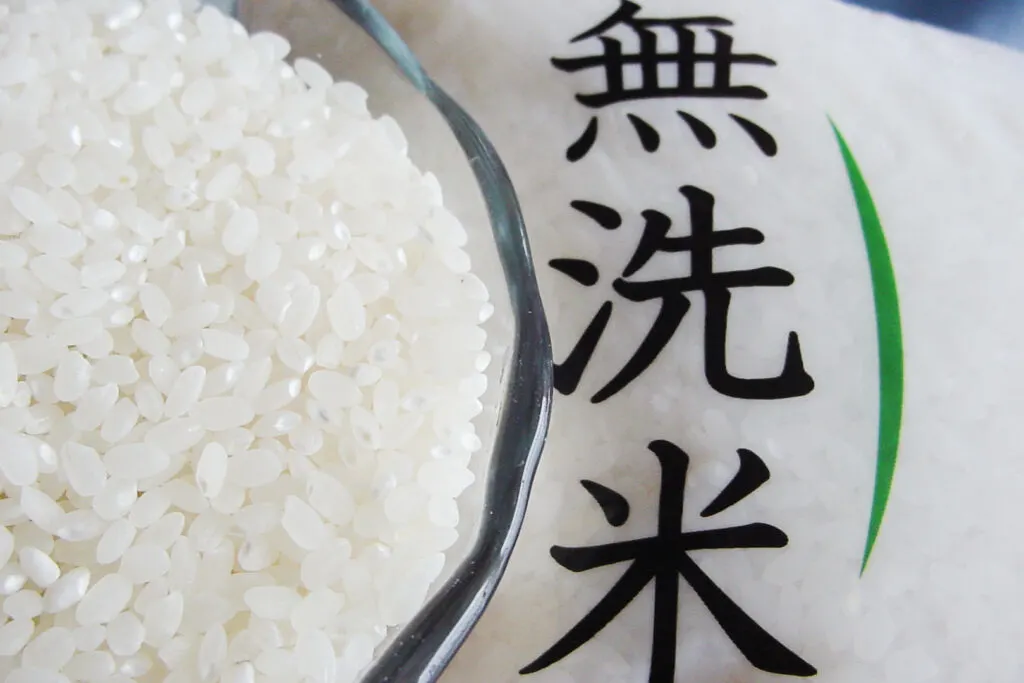
Rice water as a cause of water pollution
Hard to imagine rice water as a source of pollution? Try an internet search with the Japanese words togijiru (which is what that cloudy rice-wash water is called) and kankyou (environment) — I got 951,000 hits on Google just now.
Togijiru contains organic matter, phosphorous and nitrogen that can’t be removed during municipal water treatment. When this gets into lakes, rivers and the ocean, it provides an overabundance of nutrients to algae, which multiply to harmful levels and choke off other life.
It’s enough of a problem that Tokyo – Japan’s largest city with 13.9 million people and 11 percent of the national population – urges residents to use no-wash rice, or, if they must wash, to give the togijiru to their plants rather than sending it down the sewer.
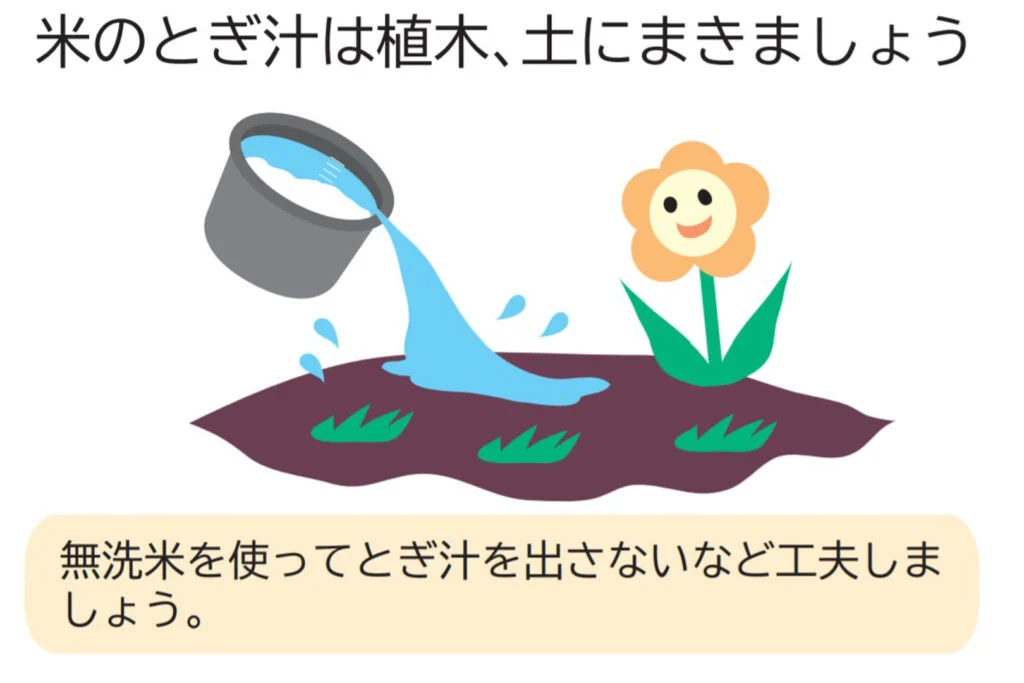
Making the switch to musenmai
The environmentally minded co-op from which I buy rice encourages members to use no-wash rice by selling it at the same price as regular rice. But in general, a 5-kilogram bag of musenmai costs roughly 100 yen (about US$1) more at the supermarket. That outlay is offset, however, by the savings in time, effort and the water bill.
You also get a better yield with musenmai, cup for cup, because about 3 percent of regular rice ends up in the wash water rather than your bowl. My co-op gives out a special measuring cup, with an indent, which allows me to scoop out the reduced amount of musenmai that will yield the same amount of cooked rice as the standard rice measure.
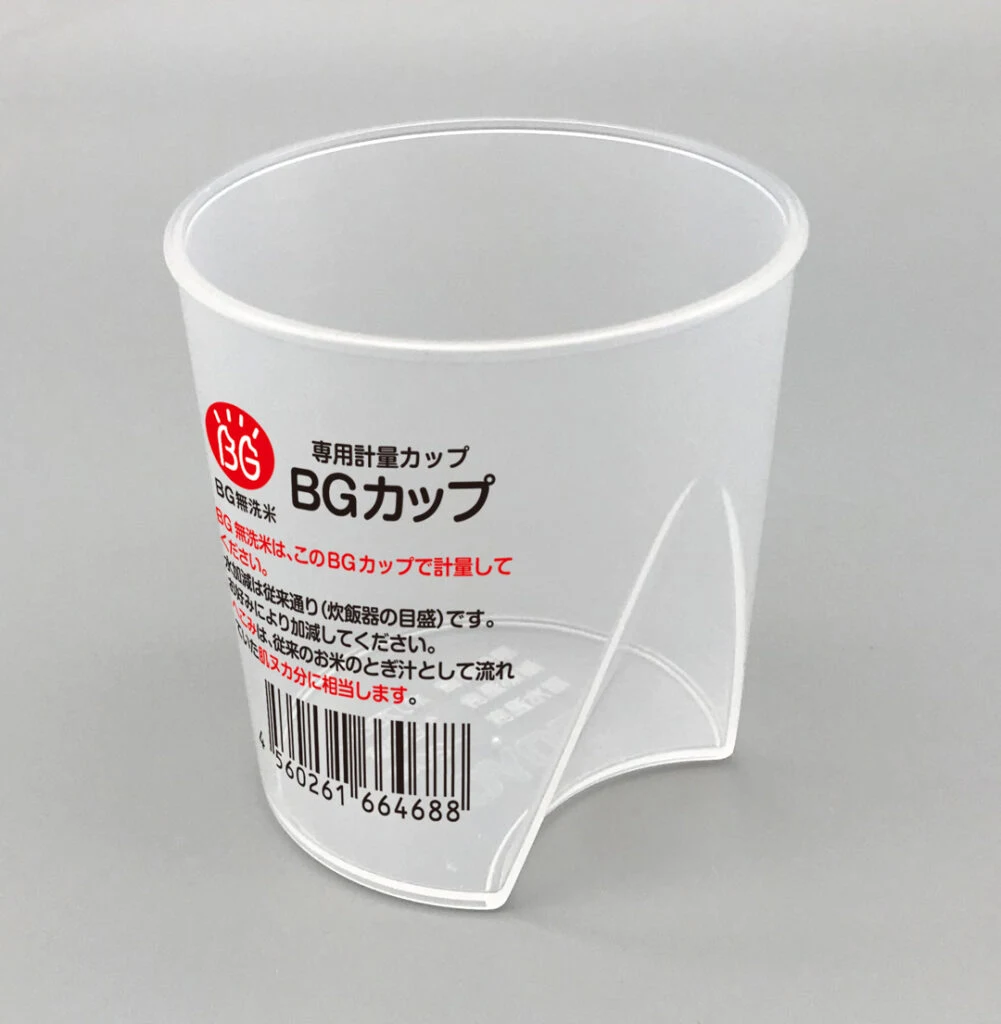
An estimated 26 percent of households now use musenmai exclusively, with others reporting that they buy it occasionally if not all the time.
I was an early convert. I didn’t know about the environmental benefit at the time, but was happy to give up the chore of washing. To me, musenmai tastes as good if not better than my imperfectly washed rice, but it’s a harder sell for consumers raised on the notion that rice has to be washed.
Ironically, even hold outs like Keiko’s mom have probably been eating no-wash rice without realizing it — it’s widely used in restaurants, school lunch programs and commercial food preparation. In fact, if you’ve ever picked up a bento lunch from a major chain, or grabbed a convenience-store onigiri rice ball, you can bet it was made with musenmai.
Do you wash rice before cooking? Have you ever used no-wash rice?
Pin me for later
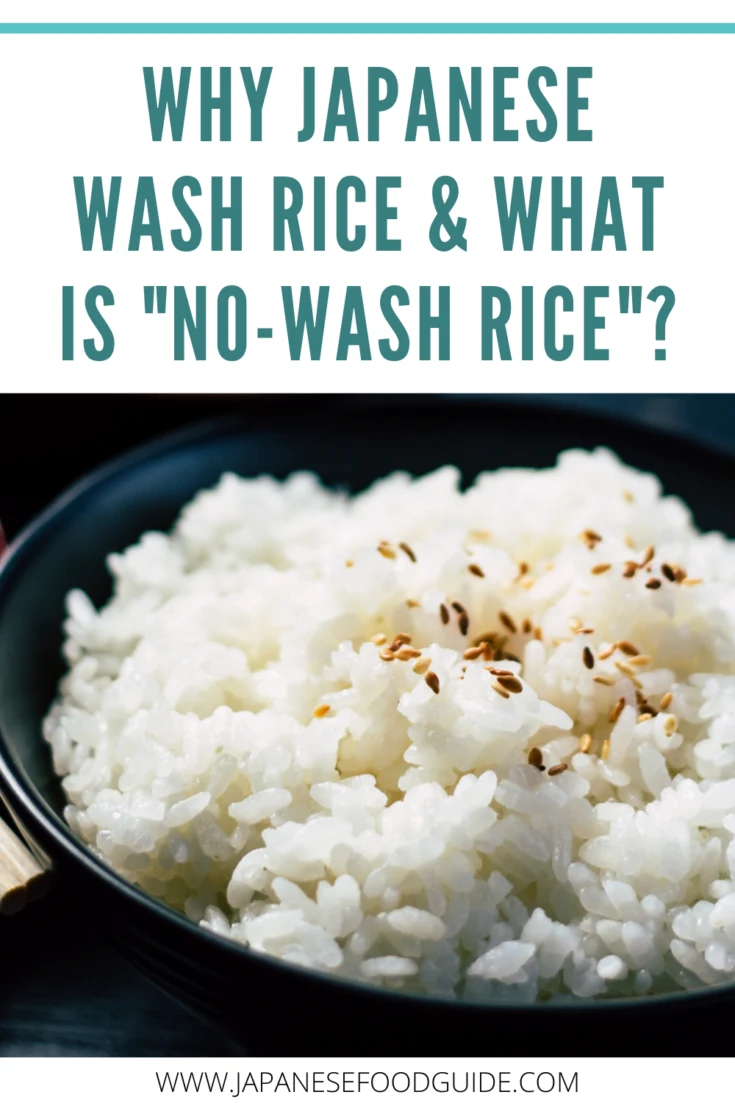
Alice Gordenker is a Tokyo-based writer. She started her career in journalism reporting from Washington, DC for food industry trade publications on regulation and legislation. Since relocating to Tokyo more than 20 years ago, Alice has made it her “life work” to provide insight on Japan through various media including newspapers, magazines, television and film.
She is delighted to be an early contributor to Japanese Food Guide, where she can once again focus on great things to eat, and how they are grown or made.

Chris
Friday 17th of March 2023
I was told many years ago, when no wash rice became available, that the former rice used talc or some other powder to keep the rice grains separated. The powder used at that time was a source of stomach cancer. The replacement powder was cornstarch (?) or some other edible starch. Do you know if this is true or just an urban legend?
Colette
Monday 13th of June 2022
My Japanese mom will go ahead and give no wash rice a wash anyway. Old habits die hard. My sister and I are happy with a few quick rinses. Currently have not found no wash rice where I live!